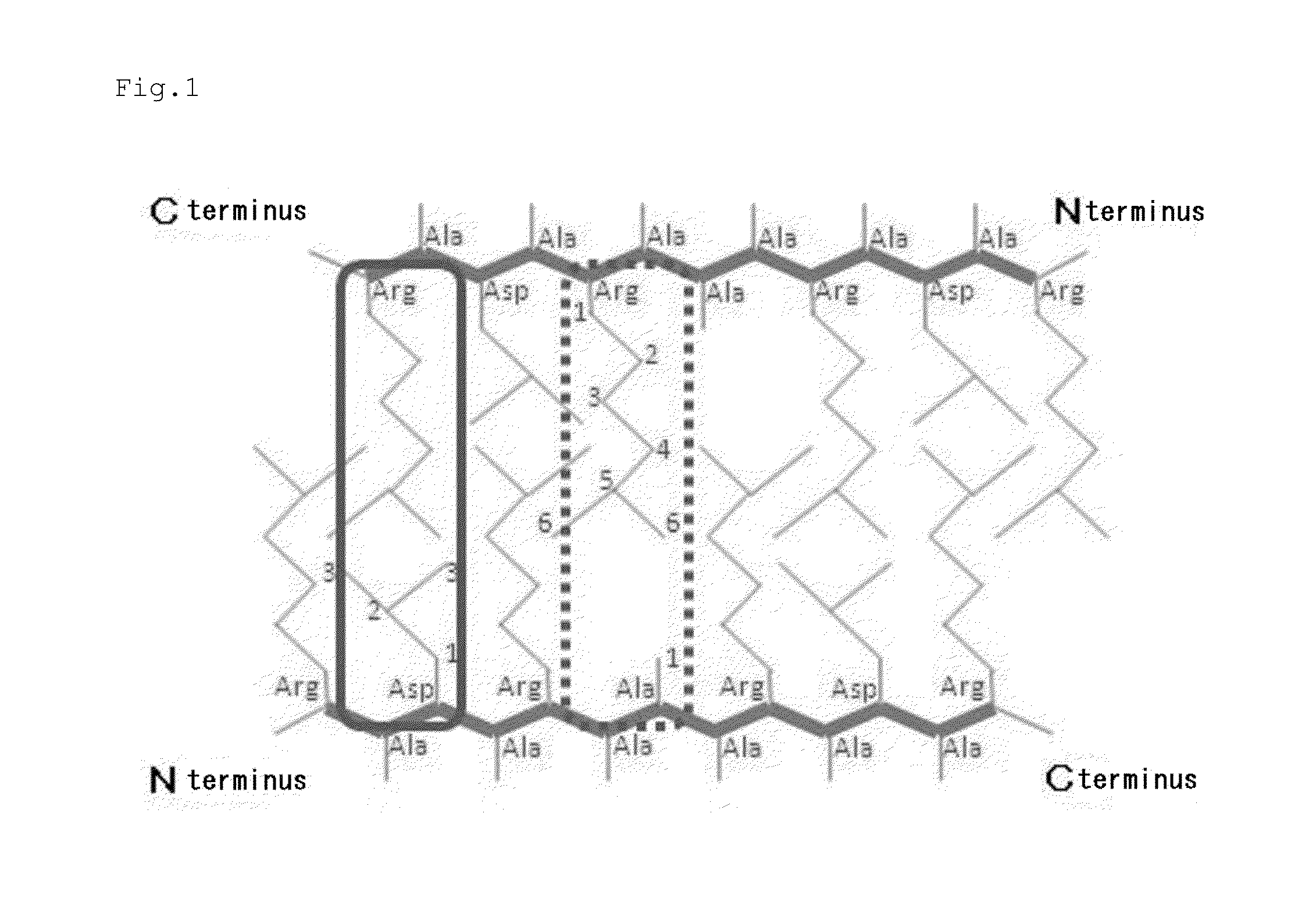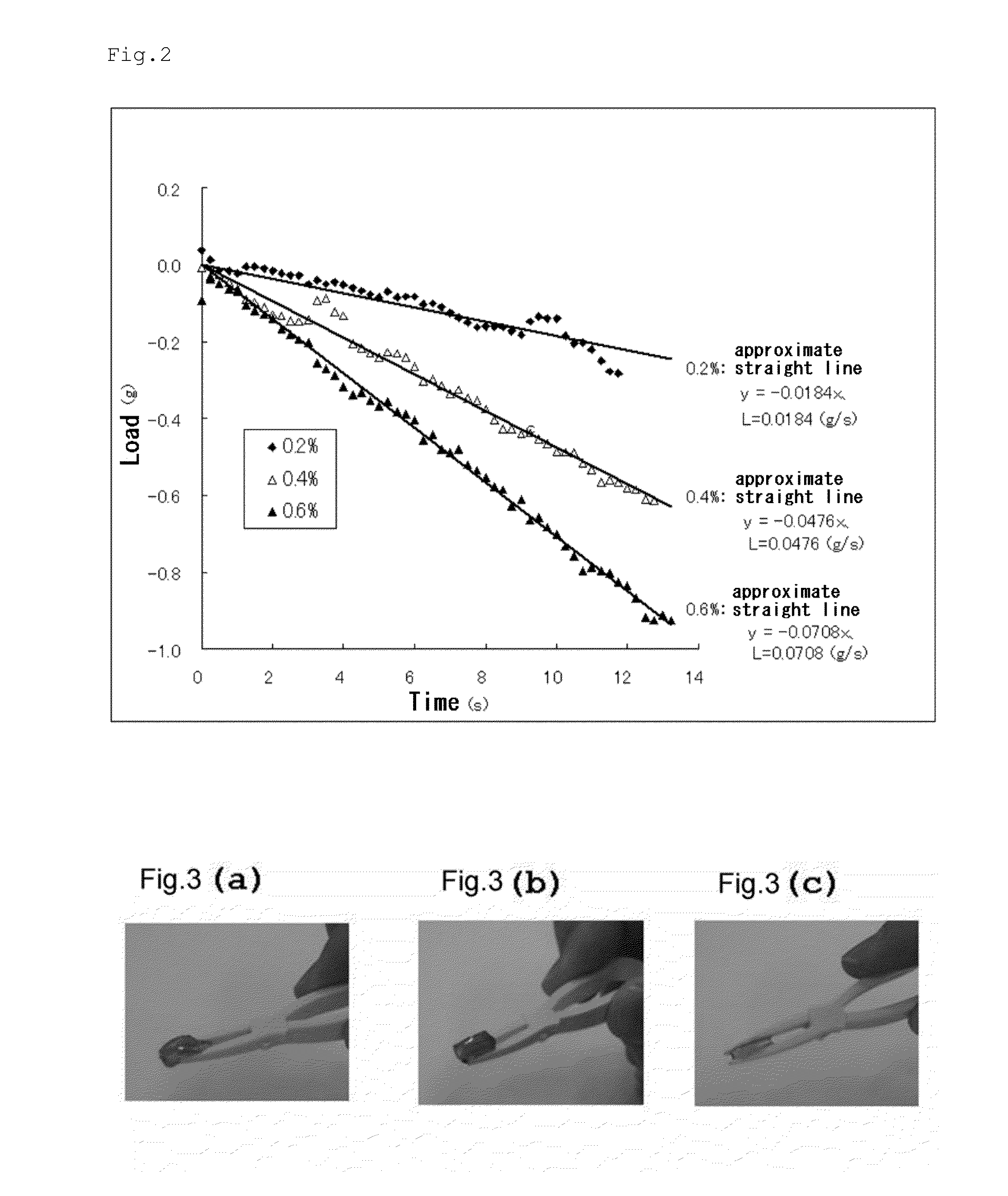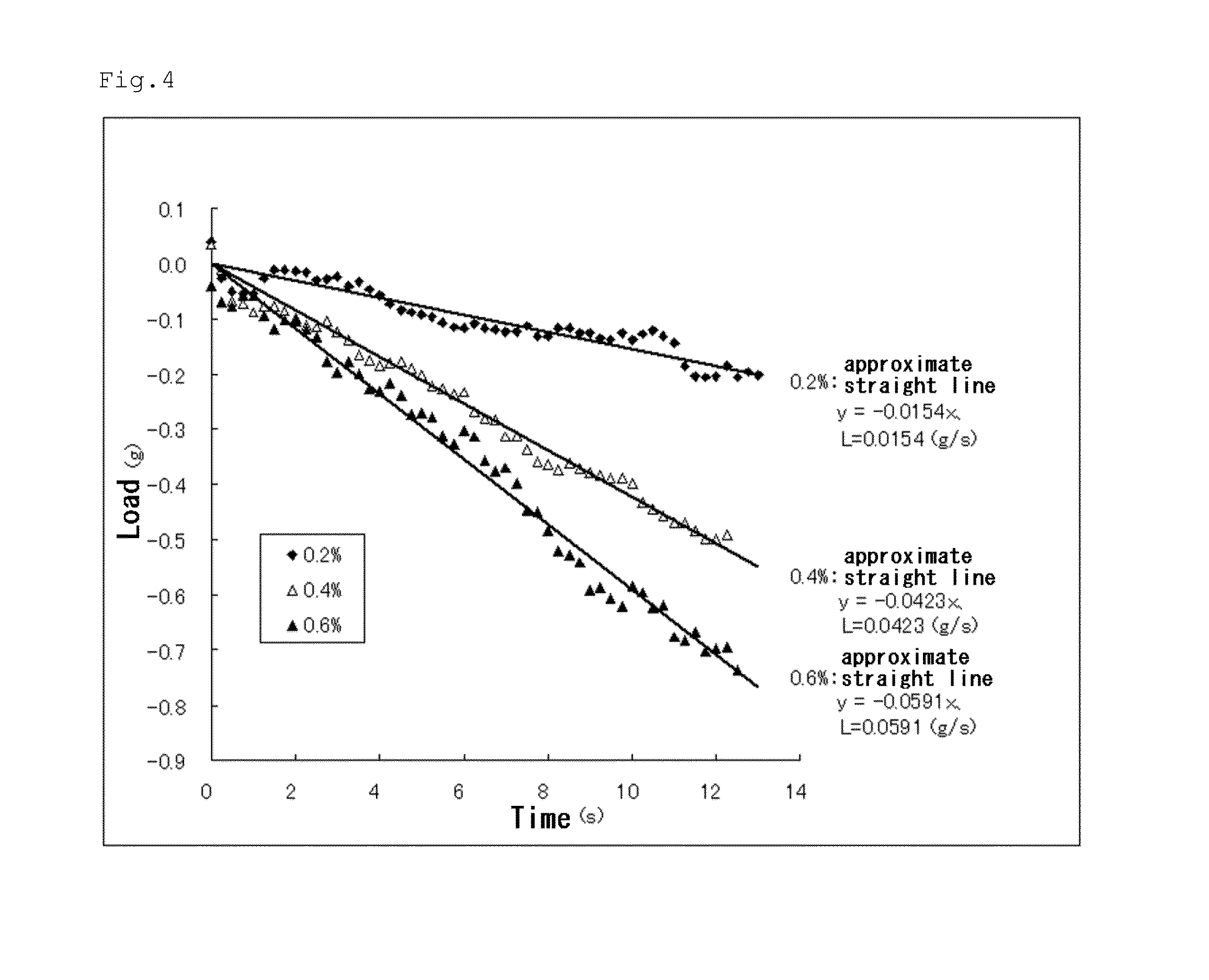Self-assembling peptide and peptide gel with high strength
a peptide gel and self-assembling technology, applied in the field of self-assembling peptides, can solve the problems of insufficient transparency of gel, scaffold may collapse when grasped with tweezers, unknown infectious diseases, etc., and achieve the effect of practical mechanical strength
- Summary
- Abstract
- Description
- Claims
- Application Information
AI Technical Summary
Benefits of technology
Problems solved by technology
Method used
Image
Examples
example 1
[0099]A self-assembling peptide formed of an amino acid sequence of SEQ ID NO: 1 described in Table 1 was synthesized by an Fmoc solid-phase synthesis method. Next, the self-assembling peptide was acetylated at the N-terminus and amidated at the C-terminus by a conventional method to afford a modified peptide 1 ([CH3CO]-RLDLRLALRLDLR-[NH2] (SEQ ID NO: 35)).
[0100]The resultant modified peptide 1 was dissolved in a 0.1 wt % sodium hydrogen carbonate solution at concentrations of 0.2, 0.4, and 0.6 w / v % to afford peptide solutions. The resultant peptide solutions were each measured for a pH value using pH test paper (trade name: pH Indicator Papers, manufactured by Whatman International Ltd., measurement range pH=6.0 to 8.1, Cat. No. 2629 990), and the pH was found to fall within the range of 6.9 to 7.8. 300 μl each of the peptide solutions were charged into a trade name “Nunc Tissue Culture Inserts” (membrane diameter: 10 mm, pore size: 8.0 μm, membrane material: polycarbonate) (produ...
example 2
[0105]A modified peptide 2 ([CH3CO]-RLDLRLLLRLDLR-[NH2] (SEQ ID NO: 36)) was obtained in the same manner as in Example 1 except that an amino acid sequence of SEQ ID NO: 2 was adopted in place of the amino acid sequence of SEQ ID NO: 1. Peptide gels 2 (liquid phase: DMEM) at peptide concentrations of 0.2, 0.4, and 0.6 w / v % were formed in the same manner as in Example 1 except that the modified peptide 2 was used in place of the modified peptide 1.
[0106]The resultant peptide gels were each measured for mechanical strength in the same manner as in Example 1. FIG. 4 shows the results. As shown in FIG. 4, the peptide gel 2 at 0.4 w / v % had an absolute value L of an amount of change in load per unit time of 0.0423 g / s in the compression test.
[0107]The peptide gel 2 at 0.4 w / v % was grasped with tweezers and transported. As a result, as shown in FIG. 3(b), the peptide gel 2 had sufficient strength to grasp and was excellent in handleability.
example 3
[0108]A modified peptide 3 ([CH3CO]-RLDLRLALRLDLRL-[NH2] (SEQ ID NO: 37)) was obtained in the same manner as in Example 1 except that an amino acid sequence of SEQ ID NO: 3 was adopted in place of the amino acid sequence of SEQ ID NO: 1. Peptide gels 3 (liquid phase: DMEM) at peptide concentrations of 0.2 and 0.4 w / v % were formed in the same manner as in Example 1 except that the modified peptide 3 was used in place of the modified peptide 1.
[0109]The resultant peptide gels were each measured for mechanical strength in the same manner as in Example 1. FIG. 5 shows the results. As shown in FIG. 5, the peptide gel 3 at 0.4 w / v % had an absolute value L of an amount of change in load per unit time of 0.0336 g / s in the compression test.
PUM
| Property | Measurement | Unit |
|---|---|---|
| Temperature | aaaaa | aaaaa |
| Temperature | aaaaa | aaaaa |
| Time | aaaaa | aaaaa |
Abstract
Description
Claims
Application Information
 Login to View More
Login to View More - R&D
- Intellectual Property
- Life Sciences
- Materials
- Tech Scout
- Unparalleled Data Quality
- Higher Quality Content
- 60% Fewer Hallucinations
Browse by: Latest US Patents, China's latest patents, Technical Efficacy Thesaurus, Application Domain, Technology Topic, Popular Technical Reports.
© 2025 PatSnap. All rights reserved.Legal|Privacy policy|Modern Slavery Act Transparency Statement|Sitemap|About US| Contact US: help@patsnap.com



